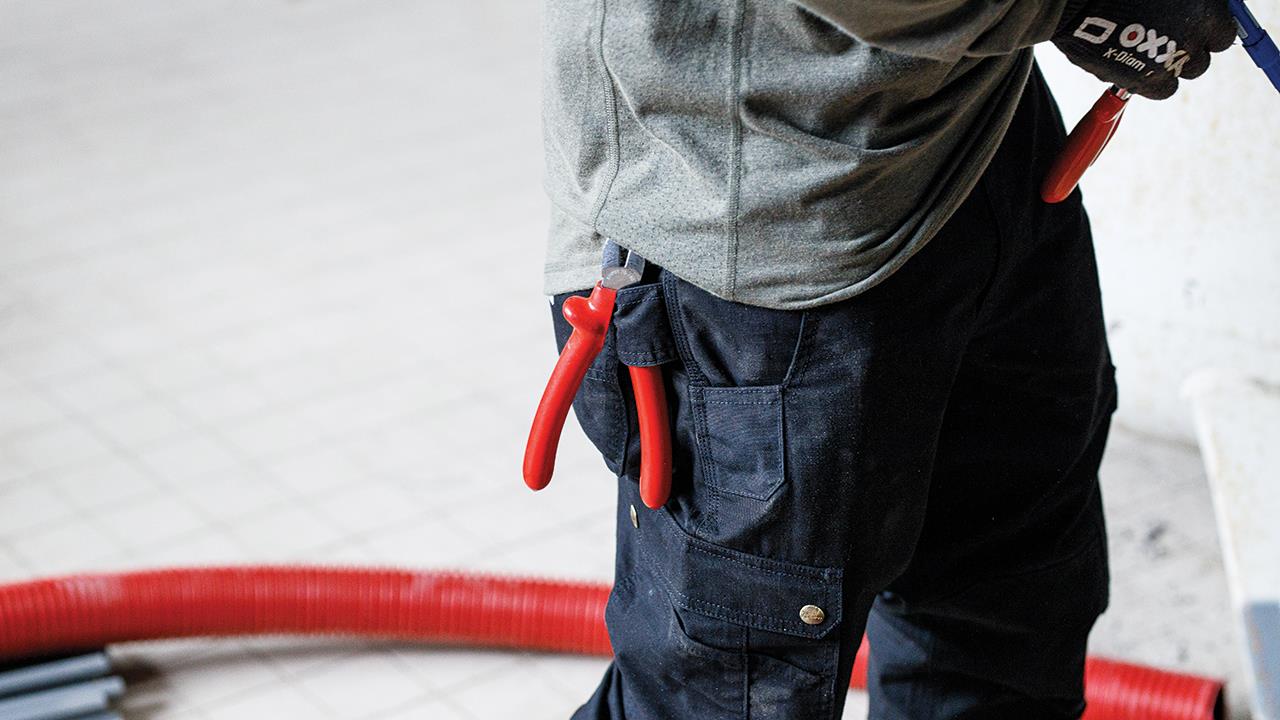

As a plumbing and heating engineer, your work can take you in all sorts of locations and situations: outside, under sinks, down drains, and into tight spaces. In one day you could be getting soaked in a downpour at the merchants and then sweltering inside. But there is an easy solution to combat whatever the day throws at you – layering.
Whether you are working indoors or braving the coldest of conditions outside, layering clothing is a practical and effective way of getting the right gear for any weather. And it isn’t just a winter necessity – it’s a year-round essential for anyone who wants to stay comfortable all day on-site.
Adding more clothes to your outfit might seem like the obvious way to layer up; but to be at your best while working inside and out, it’s important to understand the different types of layers and how to use them effectively. Each layer has a specific purpose and, when used in conjunction with each other, they create a powerful barrier against the elements. Each layer should also be loose enough to allow air to circulate, but not so loose that cold air can enter.
The base layer is the layer that makes direct contact with your skin. Its purpose is to wick sweat away from your body and quickly dry, so that you don’t feel the chill from moisture build-up. A lightweight T-shirt is a great choice for this; cotton or synthetic materials are soft and comfortable to wear against the skin and allow for ease of movement, which is very important in a physically demanding job.
Cotton is also known for its moisture-wicking properties, which means it can absorb sweat from the skin and allow it to evaporate quickly, keeping you dry and comfortable. This helps to regulate your body temperature and prevents you from feeling too hot or getting too cold.
Then come the mid layer, which should never be overlooked. It should be warm, breathable, quick-drying, and lightweight. The mid layer should keep you warm by insulating and trapping any body heat the base layer has lost, but must be breathable so moisture can escape without making you feel sticky or cold.
Take care to choose the right mid layer material: fleece, wool, and down will help trap heat close to your body, creating a cocoon of warmth. Thermal sweatshirts are ideal for colder days and, although they sound heavy, can still be light to wear and flexible. A mid layer that can be easily unzipped and removed or has elasticated cuffs so you can roll up your sleeves will give you the flexibility to quickly adjust your body temperature.
The outer layer is the final piece of the puzzle and there’s a lot to consider. This shell layer needs to be windproof and waterproof to ensure maximum protection against the elements. It should also be breathable, allowing sweat to escape and prevent overheating, and it needs to be roomy enough to accommodate every other layer without leaving you wrapped as tightly as a mummy – wide-cut jackets are always a good bet. A hood is also useful, especially ones with drawstrings to keep it up in all conditions.
Although not strictly a layer, safety boots are an absolute must for anyone working in hazardous environments. They provide protection that regular shoes can’t match. Safety boots should never be neglected – reinforced toe caps can withstand heavy equipment, sturdy soles will keep your feet safe from sharp objects, and slip-resistant treads provide unbeatable traction on even the slickest surfaces.
SB is the basic safety standard for footwear. These will have non-slip soles and toe protection against a 200-joule impact.
S1 is footwear that also has anti-static protection, is resistant to fuel oil, and has energy absorption in the heel.
S3 boots prevent water penetration and have midsole penetration resistance too, making them puncture proof.
If you want to beat the weather and stay comfortable all day, layering is your answer. It’s a vital component of any plumbing and heating engineer’s workwear, enabling you to work safely and comfortably in any weather.
When selecting your layers, consider the specific properties and purposes of each layer to ensure that they work together to provide maximum protection and warmth. With the right layering approach, you can face the warmest days or the harshest elements with confidence.
If you'd like to keep up-to-date with the latest developments in the heating and plumbing industry, why not subscribe to our weekly newsletters? Just click the button below and you can ensure all the latest industry news and new product information lands in your inbox every week.